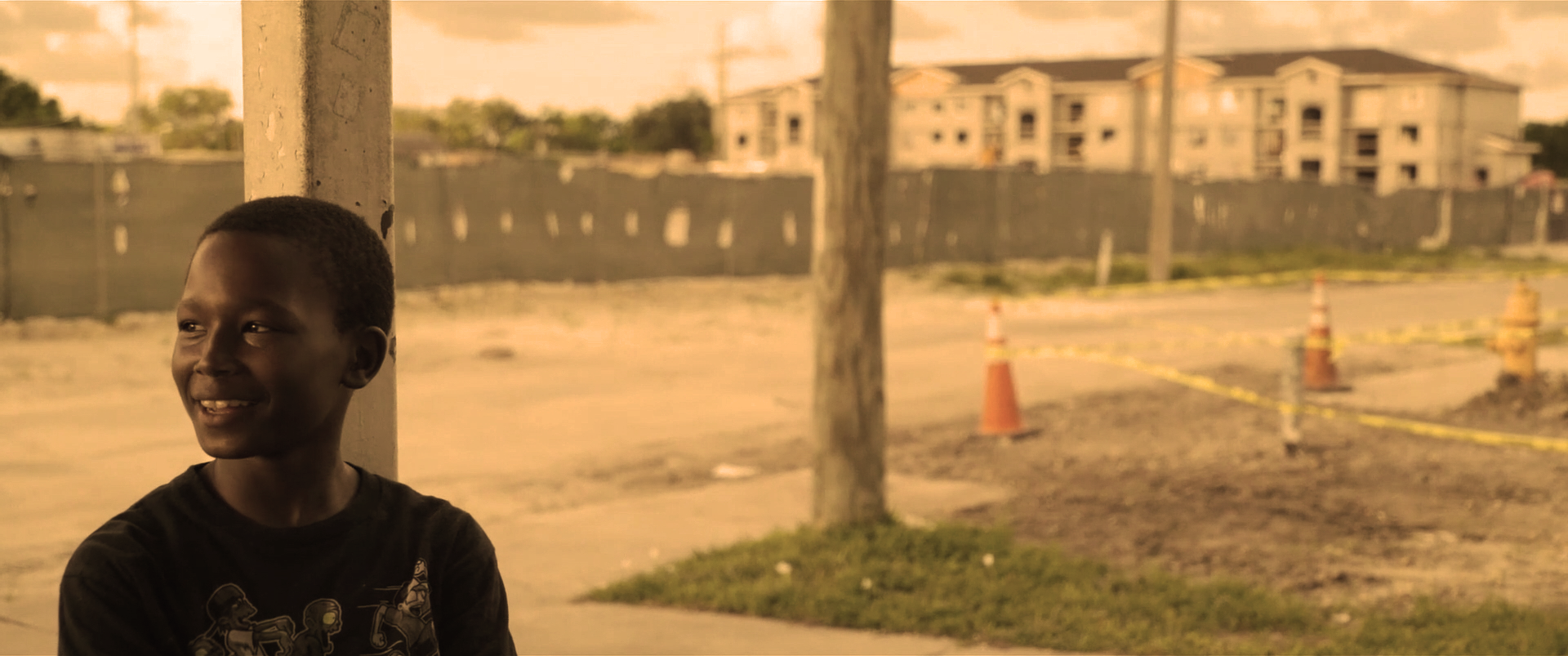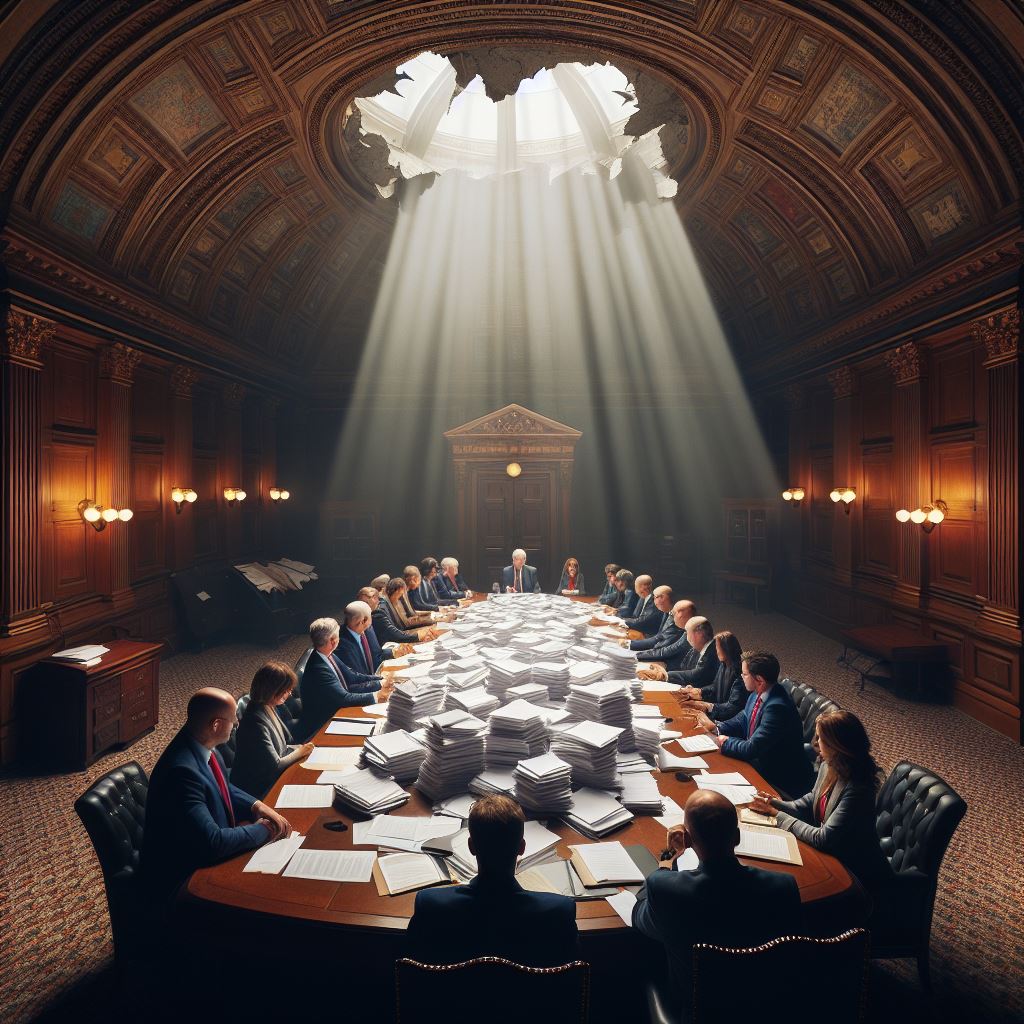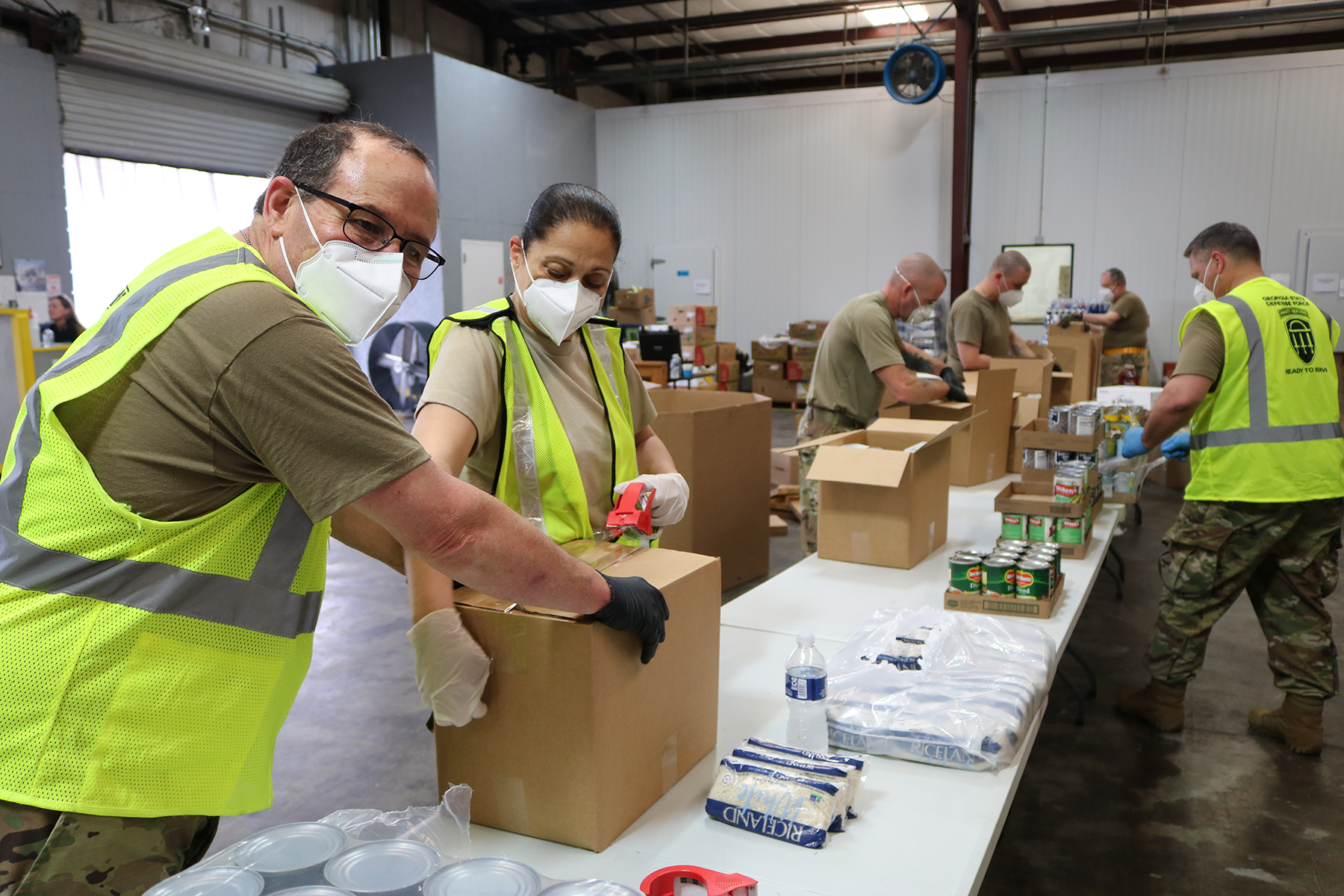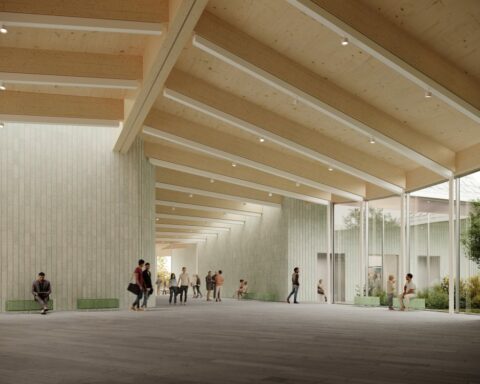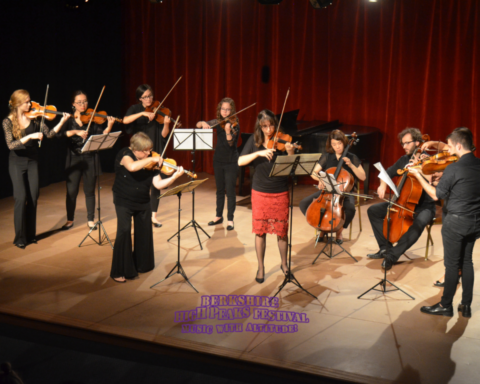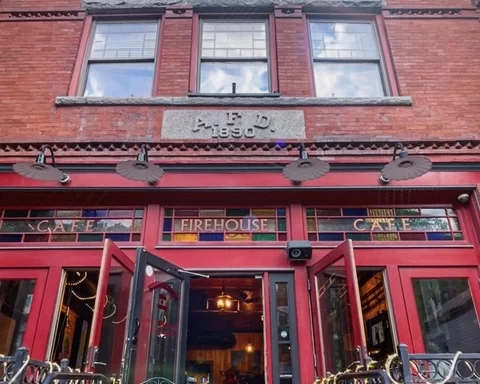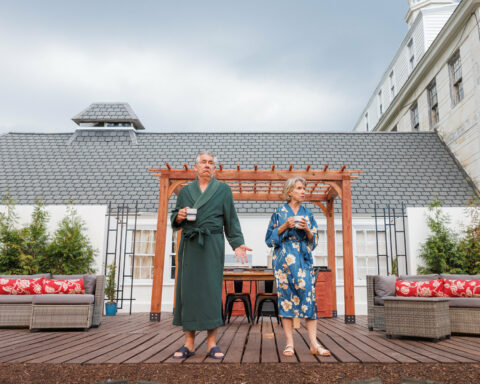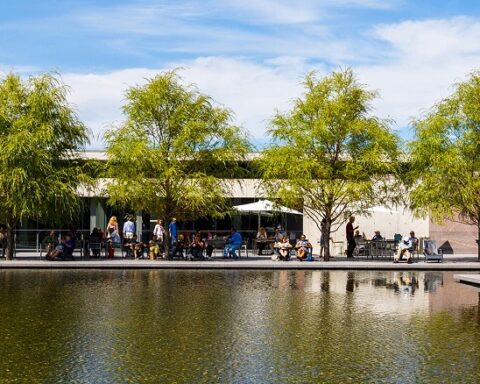Podcast (top-left-corner): Play in new window | Download
The broadcast premier of Razing Liberty Square can be viewed on PBS. on January 29, 2024. A streaming release for this powerful award winning documentary feature film directed by Academy-Award nominated filmmaker, Katja Esson will also be available.
RAZING LIBERTY SQUARE had its world premiere at the 2023 Hot Docs Film Festival, then went on to the Human Rights Watch Film Festival and won the Changemaker Film Award at the Woodstock Film Festival.
RAZING LIBERTY SQUARE highlights the current and compelling problem when community displacement and local neighborhood gentrification meets climate change. Miami is ground-zero for sea-level-rise. When residents of the historic Liberty Square public housing project learn about a $300 million revitalization plan for their neighborhood, which has long suffered from disinvestment, they know that this sudden interest comes from the fact that their neighborhood is located on the highest-and-driest ground in the city. Now they must prepare to fight a new form of racial injustice – Climate Gentrification.
NTRVW: Katja Esson
Editor’s Note: Below is something very close to a verbatim transcript of the recent conversation with our guest. If you follow along with the text as you listen, you will discover that you are NOT reading a word for word record of the discussion. We know this. We think you’ll approve of the reason why.
We use Artificial Intelligence first to process the audio from the recording to create a transcript that’s about 85 – 95 percent accurate. The problem with that level of accuracy is that it also captures most of the “uhs” and “ums.” It also doesn’t remove all the false starts or other kinds of word salad we humans pass off as communication every day.
Then we run it through Chat GPT4 to remove all those vocalized pauses and verbal detritus. I have refined the AI prompt to the point where the result is what people hope they sound like, without too noticeably changing the actual language used, other than to get rid of what nobody would be able to understand were it written out anyway. Next, I go through the transcript line by line anyway and decide what bits really need an edit, so the process does spare my arthritic hands a bit, but is still quite time-consuming.
Back in the dark ages, digital recorders were big bulky things most of us lowly reporters couldn’t afford. Speech-to-text transcription was something even the intelligence community coveted. We used reporters notebooks (I still always carry one) and a ball point pen (I don’t always remember to steal enough from the bank to keep my car stocked), and what we typed up in the articles that got published were quotes as accurate as our penmanship (or shorthand) allowed. Politicians and business leaders told us, “Make sure you make me sound good,” and if you didn’t at least try not to make them look like idiots you could count on interviews with them months later. You certainly didn’t stick in a bunch of “wells..” and “you knows.” That would be a waste of everyone’s time. In truth, most printed interviews were just close approximations of conversations, at best.
So why does any of this matter? Firstly — transparency. We want you to know how closely we hew to reality, how well we mirror the actual events and statements that matter. Also, we want you to be educated about how the sausage is made. When you know what goes into the final product you enjoy reading or listening to, we think you’ll be in a better position to value our work properly. Thirdly, we’re also kind of geeks and like to brag about how much tech we throw at our work. If you have any questions or comments about this, or any of our editorial policies, please e-mail us at [email protected].
Top Left Corner: Katja Esson is an Academy Award nominated filmmaker born in Hamburg, Germany. After graduating from secondary school in Hamburg, she moved to the United States to study film, earning her bachelor’s in Motion Pictures and Theater at the University of Miami, Florida. Esson began her career in Miami as production assistant for the notorious rap group two Live Crew. Now based in Miami, she’s known for her intimate, character driven documentaries tackling race, class and gender. Her credits include The Women Make Movies Release Fairy Tales in 2003, which was nominated for an Academy Award. More recently, she’s known for Skydancer in 2011, backroads USA in 2013, and American Rivers in 2016. Her films have screened at The Motion at the Museum of Modern Art, the American Museum of Natural History, and the Smithsonian. Koch’s work has been supported by the National Endowment for the Arts, the Knight Foundation, ITVs, Ida enterprise, Nysca, the Redford Center, Sundance, and the Ford Foundation. Now, it is my distinct pleasure to welcome to the show Katja Essen. Thanks so much for taking the time to speak with us.
Katja Esson: Katja Esson: “Happy to be here. Good morning.”
Top Left Corner: “We spoke a little bit in our digital green room before I hit the record button, and we started to talk about so many things that we could go just about anywhere. So why don’t we start with one of the first things you did out of school? What was it like working with Two Live Crew?”
Katja Esson: “I know that it helped me with my street cred a little bit with this film. But when I could drop it, and actually, this morning, a big article came out in the Miami Herald, and they mentioned that too, you know, that’s something that is very important here. Of course, I had no idea. I just had come here. My English was very bad. I was a film student, and they were looking for free PR for these music videos. And I was like, ‘Here, here, I’m doing it.’ I remember, I was a production assistant, so, I was doing everything from getting water to whatever was needed. And I remember not understanding the lyrics and asking the DP, who is still a friend and also worked on this current film, in my bad German accent, ‘What are they singing about?'”
Top Left Corner: “And he just…”
Katja Esson: “Refused because the lyrics were so raunchy. He wouldn’t… Yeah, I have some really funny anecdotes with Uncle Luke, with Luther Campbell, that I won’t share here right now. But looking back, I had no idea. I did not understand. I was still too fresh in this country, in this city, to grasp where I was, you know, and how it connects to Miami. There was a feeling of danger at that time, late ’80s, in the neighborhood. But I didn’t really put it together until much later.”
Top Left Corner: “I’m glad you didn’t, because you might have run away if you had known. So you ended up easing into understanding that very unique urban scene in Miami. Why Miami, by the way? There are a lot of film schools in the United States. What attracted you to Miami?”
Katja Esson: “Good question. That was also a friend of mine. Complete coincidence. A friend of mine who is a producer, actually, that I’ve worked with for many years, who is also a producer on Raising the Producer. Carina Sager had gone to that same university and convinced me, and more importantly, my parents, that it was a fantastic film program and a fantastic university, and it was worthwhile. And that’s at that time, it was very difficult in Germany to do both, to study film and theater at the same time. So that’s how I came here. But I was always thinking I would come back to Germany. Little did I know that I would be stuck here, you know.”
Top Left Corner: “Stuck. And I’m sure a lot of people are saying the best ways because you’ve done some really amazing work. I mean, I mentioned some of your projects, like Skydancer, which was a very gripping documentary on two Mohawk steelworkers, wasn’t it? Correct. And that was maybe one of the first things that really grabbed national attention. And then of course, Backroads USA and American Rivers, both five-part series, which I have not seen, I’ll admit, but I’m going to now because they seem sprawling and expansive and wonderful. So you have this love of the United States, it seems, that managed to earn you the distinction of being the only female German filmmaker to be nominated for an Academy Award. How does that feel?”
Top Left Corner: “Yeah.”
Katja Esson: “The only female for documentary, yes, yes. It feels… It has been a long time ago now, and I was very much at the beginning of my career at that point. And, yeah, it feels, it is great, of course, but making documentaries is extremely hard, you know? So, if people sometimes think, oh, you know, that being nominated should make it so easy, you know, that’s not the case at all. It’s a great title to have, but the work to get your film funded and get it distributed is as hard as ever.”
Top Left Corner: “Don’t all the doors just fly open and the gold coins don’t just all roll in? Oh well, it’s a shame that it’s the case because it sounds like you do work that really means a lot to you and to the subjects that you cover. The only other thing that I want to ask about before we really get into Raising Liberty Square is Women Make Movies. I saw that, you know, you have a nice biography there on their website. Tell us a little bit about what they’ve been doing for the last 50 years, I guess.”
Katja Esson: “They have been absolute champions of films by women about women. And, like you said, for the last 50 years. I mean, they are, they have been so intricate in really pushing for films by women, through the gatekeepers, you know, making sure they are at certain festivals, sitting on jury panels, who’s getting funding. I know their work has been amazing, you know, and they have paved a really great wave. And they now have an amazing catalog of films, of great films. So I, I absolutely love to work with them. They have been amazing. And I think, yeah, all of my films are distributed by them, you know, for educational purposes. So yeah, I love working with them.”
Top Left Corner: “That’s great. It’s great to know that the women had the foresight 50 years ago to say, you know what? If we’re going to move the needle, we got to start now. And that’s awfully handy, because Lord knows Hollywood, for example, has not really earned itself a very good reputation when it comes to that. So this is great. All right. So let’s talk a little bit about Miami. Let’s talk about Liberty Square. Obviously, people can get this when they watch the trailer, which we’re going to embed in the show notes. But give us just the backstory. I guess it was 1937 that Liberty Square became one of the first public housing projects in the United States. Tell us a little bit about what that meant at the time and how it grew into the center of a much larger community.”
Top Left Corner: “Yeah.”
Katja Esson: “At that time, the Miami downtown had a segregated area called Colored Town, and it was bursting at the seams. And, okay, this is now there are different versions of why, during the New Deal, the government said, hey, we have to create better living conditions. You know, if it was really to create better, better living conditions or to say, hey, we need more space for our white business district that wanted to expand to. But anyhow, you know, they created this colony, outside way outside of Miami city limits and very far inland, you know, away from the precious beaches. And that’s where Liberty Square was originally built, in the middle of nowhere. So they were without political representation for decades. Now it was what happened is that it became such a successful public housing development for black people, so segregated that teachers and nurses and policemen, you know, like a middle class black neighborhood started growing around Liberty Square. And that’s where the golden age happened in the in the 40s, 50s in the neighborhood. 60s, that you also hear the elders talk about in the film and they say those were the golden years. I mean, this is where it was a vibrant, culturally so important place. You know, with the Hampton House, there was a film called One Night in Miami that took place, and the Hampton House, you know, Martin Luther King Jr had gave his first the first version of I Have a Dream speech at the Hampton House.”
Katja Esson: “Cassius Clay became Muhammad Ali in, you know, right next to the Hampton House, all in Liberty City. So it was this amazing neighborhood where also all the stars that were invited to the big Miami hotels at Miami Beach to play for the white audiences there. But they were not allowed to stay during segregation. So they all had to come back, and they all went and stayed and then jammed in Liberty City. So it was an amazing time. But at the same time it was segregated. And it didn’t have political representation. So there was a chronic underdevelopment, underinvestment, and neglect by the city so little. And also, you know, that what is really known nowadays that public housing developments all over the country have just been not kept up. So it fell little by little in disrepair. And it also the city decided or the county decided, government decided to place basically nearly all other public housing projects around it, you know, all in the same area, which then created. And this is a term that’s loaded, but it’s created, like Aaron also says in the film, concentrated poverty, which then led to middle-class black families moving away. So Liberty City became a very low-income, impoverished neighborhood. And that led then also to the first riots in the 60s and finally led to the really horrific McDuffie riot in 1980.”
Top Left Corner: “Yeah, yeah. So basically, it sounds like in the early couple of decades, it became a vibrant community, despite the lack of upkeep from the government. It became a cultural center until, as you said, they started putting other projects around it. Aaron McKinney, the development coordinator for Urban Related, the private development company that won the bid to redevelop Liberty Square, seems to be an interesting figure. In some scenes, he appears to be a Judas, betraying the neighborhood he calls home, but at the same time, you think that in some part of him he believes that the redevelopment will have a positive effect. When did public officials start talking about tearing down Liberty Square and redeveloping it?”
Katja Esson: “That was, I think, even before my time. The neighborhood has been challenged, for years known as the most dangerous zip code in the United States. Officials have talked through the years about needing change. There was an attempt to tear it down many years before, stopped by the community. This redevelopment was approved in 2015 and started in 2017 with the demolition.”
Top Left Corner: “So like many such projects, it seems when they bring the community in for a meeting to get input, all the details have already been worked out, like just pushing the start button. Is that how it seemed to the community?”
Katja Esson: “That’s what I’ve heard from the community. There was a long process of canvassing the community and asking what is needed, what people wanted, but according to the community, it wasn’t really taken into account. That’s your impression, and that’s what I heard from people, that it was not built for this kind of community.”
Katja Esson: “So there’s a lot of directions we can go here, but let’s stick with those meetings. There were people who said, all of the planners live outside Liberty City. Why are there no people who look like me? That affordable housing slogan is just a systematic way of removing black people from the community. That seemed to be a common sentiment. The idea of having mixed income housing, did that come to pass or did these apartments mostly go to people who could afford it?”
Top Left Corner: “So, did this diversity, this mix, actually get achieved in the end?”
Katja Esson: “You mean, was this mix achieved? That’s a good question we’re all asking ourselves. Keep in mind, when the film was completed, of the nine city blocks that make up Liberty Square, a huge area, only three blocks are done. Six are still being built. We have a new local HUD director working with the organizing team associated with our film. Before that, local HUD wasn’t forthcoming with information. We, as a film team, and the local NAACP wanted to know the numbers, who’s there, who’s still there from the original residents, what exactly is the mix now? It’s not transparent.”
Top Left Corner: “You, you mentioned in the film, towards the end, there were some figures, some follow-up information. I don’t think it was even a dozen families who had moved back in, a really tiny number.”
Katja Esson: “When we stopped filming in the summer of ’22, local HUD informed us that only five of the families that had left had returned. That is a tiny number. The hope is that more families will return. Many people are pushing me to do a follow-up, because the truth about this right to return will be evident in a couple of years. Like the Scott Carver project mentioned in the film, which took 12 years, and of around 1100 units or families, only about 300 returned. Local HUD hopes more will return, but we don’t know.”
Top Left Corner: “Yeah. The concept of the right of return is going to define our times, internationally even. Right of return means that the conditions must be such that what you want to return to still has room for you. When you’re talking about rural America, areas are being hollowed out, farms sold off, developed. So even if you could go back to the zip code plus four, even if you go back to that very, you know, latitude and longitude, what you had culturally, historically, communally doesn’t necessarily exist. And I think the thing that you did and you did it just brilliantly. The clotheslines.”
Top Left Corner: “You started with the clotheslines and. It was just as you would imagine. People did their laundry on Saturday. What does that mean? I mean, I know that our audience probably can guess, but to those residents, to you as you discussed it with them, what did that what did they represent?”
Katja Esson: “Yeah. I mean, for me, they represent the community, of course. And that was and that is also a little bit I mean, that is sad for me now when I, for example, I just saw Miss Gaines again, the woman that holds on to the clothes pin in one of the scenes she was I just picked her up and brought her to the premiere, and she basically has no interaction at all anymore with any of her neighbors. She’s only inside, kind of cooped up inside, you know, the washer.”
Top Left Corner: “And dryer.”
Katja Esson: “With her washer and dryer. She was so worried about the electric bill, and that’s another issue that’s happening there now. But the fact that people have no porches, no clotheslines where they met and talked, it’s a very different way of living now. I’m from Hamburg, Germany, but I’ve lived here long enough, and I’ve talked to people about the southern way of life, of porches, of barbecue, and all that. That’s just not possible anymore there.”
Top Left Corner: “Yeah, they aren’t even allowed to have chairs and things outside, other personal belongings. And the barbecue grill, I mean, it’s the South, for crying out loud.”
Katja Esson: “Yeah. Yeah, it’s sad and makes you wonder. Was this really thought through? What about these cookie-cutter buildings that are put there now? Was that the right way to go? I mean, we’re in Florida, for crying out loud, why are there no solar panels on the roofs?”
Top Left Corner: “Wow. Yeah, it almost kind of makes you wonder if isolating people wasn’t the point all along.”
Katja Esson: “Yeah. Aaron said this one line that really struck with me. He said, ‘I hope it’s ignorance and not by design that certain things are done.’ But there are so many books now written about mixed-income developments, like in Chicago, for example, there are whole case studies that describe what you have to make sure to preserve so you don’t alienate the original residents.” Yet, I’ve heard from some who said, ‘No, we’re not going back there. Why would we deal with this kind of management and treatment there? We’re not going to go back there because it’s not our community anymore. You know?’”
Top Left Corner: “Yeah, I think this is really representative of taking something that was public and privatizing it in a way that not only allows politicians to wash their hands of it, but also allows for less and less transparency.There is a company, a corporation here that runs some of the, they’re for seniors, but also for people with disabilities. They would have been, you know, senior housing run by towns — and in some places here in New England, you do have the towns themselves running the senior housing, and the residents have far more access and far more ability to have a say in what goes on. But here you don’t even know who actually owns it. It’s in trust. There’s the same thing. You’re not allowed to have stuff out on the porch. You’re not allowed to have a grill. You’re not allowed to have other things. I mean, it’s just one of those things where… Okay, you know. Yes, these seniors who live here are in new housing, which of course, in the beginning also leaked because of shoddy workmanship. But then there is an isolation factor that seems almost intentional, and it’s heartbreaking because you know that once that ball got rolling, there was no stopping it. There was no way for people to say, ‘Whoa, whoa, whoa, wait a minute. Let’s talk about this’ because everything had already been decided. Except there were people, and there still are people in Liberty Square who are fighting. I just love, I’m sorry, I loved the school principal.”
Katja Esson: “Samantha.”
Top Left Corner: “Samantha Quarterman, the MEYGA school principal.”
Katja Esson: “MEYGA, MEYGA.”
Top Left Corner: “MEYGA, MEYGA, yeah. What’s her take on what’s going on? She’s fiercely proud of that community and the kids she teaches.”
Katja Esson: “No, she’s passionate. We’re posting about her on social media from our hometown premiere panel. She’s clear about the importance of her school for the youth and how she’s frozen out, starved out. She’s the only organization standing against the development company. The new HUD director and our mayor, Daniella Levine Cava, are working hard to support her and get her a new facility. But none of the promises from the developer have been kept.”
Top Left Corner: “Even though the mayor, um, was it Jimenez? Who was the previous mayor?”
Katja Esson: “Um, uh, Carlos Jimenez.”
Top Left Corner: Yeah. I mean, he said in the film, ‘We’re going to make sure that the promises are kept by the city and by the developer,’ and obviously that didn’t happen. There are two women that I loved in this film. You bring them in pretty frequently. They almost act as de facto narrators or the Greek chorus. Melba Rose and Anna Williams. What made you choose them? And what is their role in the film? Am I right in seeing them as a narrative force?”
Katja Esson: “Yes, you used the word we actually used in editing. It’s mainly them, but also the Walkers, Philip and Hattie Walker, and the Tree of Knowledge, all the gentlemen that sit under the tree.”
Top Left Corner: “Yes, yes.”
Katja Esson: “Retired community members. They’re all elders and former Liberty Square residents. They grew up there, made successful lives, and remember the golden years, as Melba says. They are still fighting. They have an organization called Friends and Family of Liberty Square. They’ve been in touch with the developer from the beginning. They tried to stop the demolition, arguing for historical designation, but it wasn’t done. They insist on preserving the community center and staying in touch with former residents, giving scholarships to current students. In the film, they are our Greek chorus, bringing in history, context, and community.”
Top Left Corner: “I loved everything they had to say. The pragmatism you get after seeing the best and worst of times, repeated over and over. The cycles you see after 70, 75 years. They have a realistic attitude but still a fire in their belly for justice. There was a woman at one of these community meetings, not one of the older women, middle-aged or so. She said, ‘We really don’t care about a shopping area. We want our history to continue.’ That was so powerful. It’s about holding on to our humanity. It seems like the planners were hoping to buy people out with convenience, offering a shopping area. But that’s not what people wanted. It’s one of those things where people would say, ‘How much do you want for your house?’ And they’d say, ‘I’m not selling.’ And then they’d come back and say, ‘No, no, no, how much really? How much do you want?'”
Top Left Corner: “Well, let’s talk about Valencia, the climate justice organizer who moved in amidst all of this. She decides to move in. What attracted her to the area enough that she would stay and fight, even though it wasn’t her original upbringing?”
Katja Esson: “”But it was. And this didn’t make it in the film. But this house is her grandfather’s house that was taken over by the bank.”
Top Left Corner: “Oh, okay.”
Katja Esson: “Yeah, it’s her grandfather’s house. Her family is from Liberty City.”
Top Left Corner: “Okay, I missed that then.”
Katja Esson: “Yeah. No, no, that’s not in the film. I don’t think that’s in the film. I have to go back.”
Top Left Corner: “I might have missed it too, but the point is, she’s a young person, and she seems to really want to provide a lot of energy in a realm that wouldn’t even have to be discussed for this to be a powerful documentary. But when you add climate justice to it, it opens up a whole new dimension. Was she successful in educating people about the impact of the climate crisis on their community?”
Katja Esson: “Yeah. And she, she just, I just heard her talk again on that panel. She saw, she said the community knew this. They were sitting high, the beach is flooding, hurricanes are tearing everything down, and here in Liberty Square, not a shingle is off. So the community was aware and she says now they do with climate gentrification. She has been very successful and is growing to an international level, always going back, concentrating on local work. She just opened the Freedom Lab, her office for her organization, right there in Liberty City. She’s growing, from setting up barbecues and feeding the community during power outages to talking on a national level to government. She’s extremely successful, powerful, and people listen to her. She has connections to government and media, wielding some power.”
Top Left Corner: “I have a feeling that when you’re talking to her personally, you can almost feel the electricity coming off of her. There were just two things that struck me. The idea that one of the first things to go into this new development was a pet shelter, an ASPCA boutique shelter. That would have been such a slap in the face for the residents. As much as I love cats and dogs, putting animals before people.”
Katja Esson: “Right. Yeah, that’s what people from the community are bringing up now that they saw the film. A lot of people thought this clinic, I mean, it’s like 27 million for a vet clinic. It’s really, I mean, and of course, they connected the dots and said, yeah, they’re getting ready for the new residents they’re hoping will come here. There was talk about a Whole Foods. I don’t think that’s gonna come anytime soon. But I heard that too. I was like, what? You know, who are you building this for? So yeah, that upsets people a lot.”
Top Left Corner: “Was it, am I wrong, was it not ASPCA or was it? Yeah. Oh, it was.”
Katja Esson: “Yeah it was. But it had state-of-the-art operating tables and everything. You know, it was a clinic.”
Top Left Corner: “So a very boutique kind of clinic though. Got it, interesting. And of course, the idea that you’re going to throw a Whole Foods in there. Yeah, that doesn’t send any kind of a message at all. So, the last point I want to bring up, and I started the conversation with this, Aaron, he seems to be the most uncomfortable figure in every single scene. Like, he just realizes there is no easy way out for him. He is going to be perceived as a stereotype. He talked about what people called him, and ‘Uncle Tom’ was the nicest thing a lot of people called him. What did you make of Aaron? Did he change? I mean, a lot of characters in film, in fiction, are static characters, but he doesn’t seem to be. He seems to be a dynamic character who goes through an evolution. Did he change? That’s the way it appeared in the film, but did he change as the filming went by?”
Katja Esson: “Uh, I mean, he is, of course. I mean, I am in such awe of Aaron because, yes, he’s the easiest to attack, you know, and he is guarding himself and he knows. And there was a moment at the Miami premiere, you know, where people kind of said to him, ‘Hey, man, you should have known that they were using you.’ And he gave a really good answer. He said, ‘Look, I’m not naive. I knew exactly what I was getting into. I have a lot of experience in this field.’ He does have a lot of experience in real estate, in policy, in social work. And he really believed if he could get a seat at the table, he could make a difference and watch out for the community, which is his community. And he tried. And I saw him try. We saw him try and he was shot down. He had all these plans that he wanted to do to fuse these different groups together, and there was no interest from the development company. I was on a journey with him because I started this film believing that this could be different. It was lauded as this completely new concept because of the unique way that Liberty Square is so huge. There were a lot of empty units, enough that an entire block could have been placed in the empty units. Then you do a block by block demolition, so nobody has to leave. That was transformational, that idea. So I went on that journey with him, with high hopes and then saw the hopes being shattered, and that was the journey of Aaron, the journey of the film, my journey, and the journey of many in the community who also had a lot of hopes.”
Top Left Corner: “Yeah, I mean, you really have to feel for him, because it looked like he was hoping to throw up some buffers to soften the blow of what was happening. But what you capture in the film says it all – the incessant steady crunch, crunch, tear of the equipment into these houses as if they were made of papier-mâché, as if they were made of tissue. And knowing that if you are in an apartment across the courtyard from another house that’s being chewed up, it’s demoralizing. You see the inevitability of it. That constant chewing, tearing, and rending, razing, since that’s the name of the thing, maybe that should have been exactly the message that Aaron and others took from it. I wanted to make sure I give you time to speak about this. You spent a lot of time on this project. How many years in total? About five?”
Katja Esson: “Six.”
Top Left Corner: “Six years making this film. After that kind of commitment, that kind of expenditure of your life, what do you want people to walk away with after they see it?”
Katja Esson: “Yeah. I really would like to move people to engage in conversations about how families are impacted by both the climate crisis and the housing crisis and how they intersect. I want audiences to understand that climate gentrification is an existing dynamic right now, whether it’s sea level rise, wildfires in Hawaii, drought, or extreme heat, that will eventually impact all of us. I hope the film contributes to changing narratives and misconceptions about Liberty Square and its history, and other housing communities, not just in Miami but around the world. And then, a big learning for me was really thinking about housing as a human right. The contradiction of a private company or government handing the responsibility of housing over to private companies. I really would like audiences to look critically at the current models of so-called revitalization of low-income neighborhoods by building mixed-income development, not just in Miami, but everywhere. Like in Chicago, this model is used everywhere. And that’s what I would like people to take away from the film.”
Top Left Corner: “Well, that film is going to be shown, its broadcast premiere is January 29th, I believe.”
Katja Esson: “Correct.”
Top Left Corner: “On PBS. Mhm. And I really encourage everybody to, if you don’t have PBS, sign up for it now on your local cable because this alone is worth it. Well, hey, you know, you can sign up month by month. So, spend the five bucks, watch the film and learn something, and be moved, be enraged. I got to tell you, Katya, after this film, I felt so many emotions. I felt frustration and anger and melancholy. But at the same time, seeing some of the people who were still out there slugging it, like your teacher and your climate justice activist, I also felt some hope. So, you really took me on a roller coaster of a ride there. And I thank you for it, even if it does a number on my emotional state. Let’s do this. I would love it. We have this little art house theater here in Williamstown. It’s one of the oldest in the country, over 100 years old, called Images Cinema. I really hope you can come back. You mentioned that you know the Berkshires. We’re up here in the northern Berkshires. It would be fantastic if you can find a way to get this film, and I’ll help coordinate in any way I can. We would love to have you do a talkback at Images Cinema. So if we can make that happen, that would be fantastic. But in the meantime, folks can watch it on PBS. There are a lot of ways to get in touch with you, a lot of ways people can follow you. What would you say would be the best way?”
Katja Esson: “The best way — probably is our website. It’s the title of the film, RaisingLibertySquare.com or .org, or on Instagram, Liberty Square Raising. Sorry, I’m not so good with social media. It’s RaisingLibertySquare, that’s our Instagram handle. And also on Facebook, any of these are great tools to get in touch with us.”
Katja Esson: “Can you tell that I’m not so good with, like, social media? It’s RaisingLibertySquare. Um, that’s our Instagram handle. And also on Facebook, any of these are great tools to get in touch with us.”
Top Left Corner: “Got it. Alright, well, I have to say it’s been a real pleasure and honor spending this hour with you, Katja. Thank you so much for sharing this. And thank you so much for the work that you’ve done here, and in the future and going back all the way to some of your early works. Any hints on what’s next, or just maybe a vacation?”
Katja Esson: “Well, I’m doing something else in Florida, but also, we are having, you know, this film has started its impact campaign and that I will be very much involved for the next months. But then I’m doing a three-part series on trying to figure out why Florida is so crazy.”
Top Left Corner: “Well, we’ll be on the lookout for that. Shoot us an email and maybe we can get you on the show again. Katja, again, thanks so much and have a great rest of your winter.”
Katja Esson: “Thank you very much for having us. Bye!”


